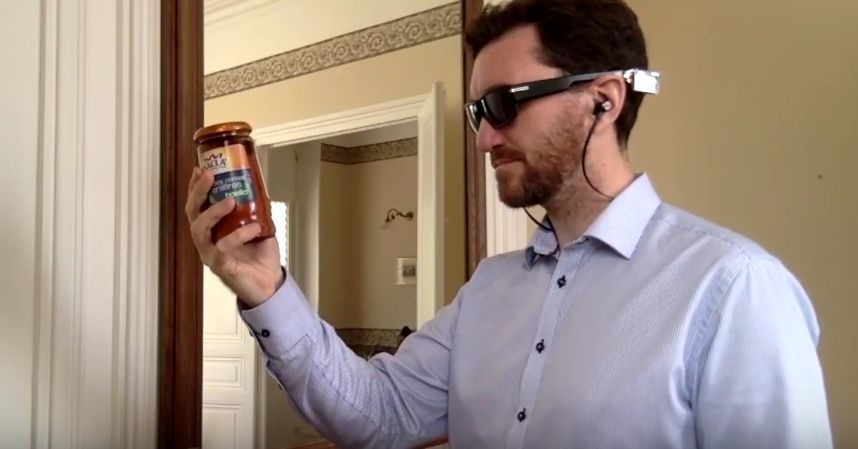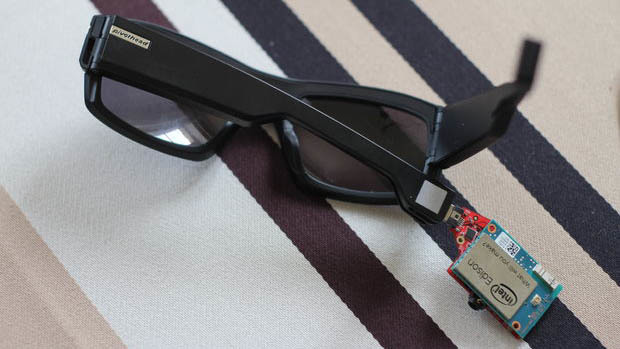Computer vision for blind people. Intel Edison Application

Intel employee Paul Guermonprez decided to combine business with pleasure: he used his developer experience to create a prototype of a system for helping poorly seeing people with computer vision. He used Pivothead SMART glasses with an additional module Live Mod Set based on Intel Edison as a hardware platform. Currently, the system can:
- find and read barcodes, voice their descriptions,
- determine the colors of objects and pronounce them,
- select colors that match the “seen” color,
- determine the faces ahead, their relative location and distance to them, voice this information in stereo.
Under the cut - information about glasses Pivothead SMART, instructions for installing the system and a video showing its capabilities.
Pivothead SMART
Pivothead started out as a crowdfunding start-up back in 2013. The team has achieved its own: although some of the declared production did not reach, the main thing is that they have implemented an accessible basis for computer vision systems and augmented reality.

')
The base module is equipped with an 8-megapixel camera that captures HD photo and video, 8/16/32 GB memory, a Bluetooth 4.0 module and a built-in battery with a capacity of about 400 mAh. The cost in the simplest configuration is $ 200. Additional modules connect to the ears: this is either a reinforced Fuel SMARTMOD battery that increases recording time by 40 minutes, or the Live Mod Set already mentioned, which is nothing but an Intel Edison board, which is clearly visible if removed from it, as in photo protective cover.
Edison adds Wi-Fi to the list of interfaces, but, most importantly, it opens up a huge field for developers, because there are plenty of tools, ready-made libraries and software for it. Paul took advantage of this.
Installation Instructions
If you have Pivothead SMART glasses and want to try the functionality created by Paul, follow his installation instructions.
- update edison firmware to version 3
- configure on Edison Internet
- Install packages with repo.opkg.netupgrade, but not all, otherwise the kernel will not work normally
- install packages: opkg install fswebcam nano espeak ffmpeg-x264-presets gps-utils zbar mjpg-streamer gstreamer1.0-plugins-good-interleave gstreamer1.0-plugins-good-audiofx
- install the packages: npm install -g fs sleep color-name2-color-scheme one-color-one-color-scheme one-color-one-time-one-time request request shelljs-nodecli linux-input-device canvas
- unpack the sources
- configure the web server on port 81, make the root directory / home / root / www / , by editing the file /etc/lighttpd.conf
- test the camera: fswebcam -d / dev / video0 /home/root/www/shot.png and type in the browser http: // EDISON_IP: 81 / shot.png
Go to pivothead-intel and run one of the command line demos: node demo_barcode.js .
Video demo
Source: https://habr.com/ru/post/305728/
All Articles